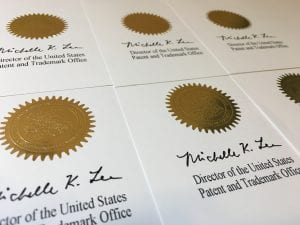The USPTO may refuse registration for trademarks that contain government insignia of any nation or those that may wrongly suggest an association with national symbols. ~ Collen Clark, Schmidt & Clark, LLP
What is one essential thing to know before applying for a trademark?
To help you apply for a trademark, we asked legal professionals and entrepreneurs this question for their best insights. From understanding the trademark rights you are granting to steering clear of government insignias, there are several things you should know before applying for a trademark.
Here are ten things to know before applying for a trademark:
- Understand the Trademark Rights You Are Granting
- Examine the Legal Protection Trademarks Provide
- Know How the Trademark Symbol Works
- Enter the Process Knowing You Might Not be Approved
- Learn About ICANN
- Consider The Future of Your Business
- Do a Trademark Search to Ensure Your Exclusive Right
- Look Up Trade Names
- Understand What You Can Protect Via Trademark Registration
- Steer Clear of Government Insignias
Understand the Trademark Rights You Are Granting
Before you file your application, make sure to understand what rights you are granting to the mark. Are you granting exclusive use of the mark? Are you allowing others to use the same mark but with different terms? Once you know the specifics, it will be easier to decide on which applications to file and which ones to reject.
Paw Vej, Financer.com Ltd
Examine the Legal Protection Trademarks Provide
Once you’ve registered your trademark, you’ll be protected, but do you know how to enforce your rights? Well before you register your trademark, examine the legal protection that trademarks provide. If you’re planning on expanding your business to other countries, also look into how trademark laws and rights work abroad. The best way to protect yourself with a trademark is knowing how far that protection goes.
Nick Santora, Curricula
Know How the Trademark Symbol Works

Before applying for a trademark, it’s good to study how trademark symbols work, and when to include them. These symbols, such as “TM”, let the public and other competitors know that what came before that symbol is your trademark. Registering your trademark and also including “TM” or an “R” within a circle offers the best protection, but you don’t actually have to have applied for a trademark to put a symbol next to your logo, slogan, or business name.
Lily Yu, Oak Springs Realty
Enter the Process Knowing You Might Not be Approved
You might not be approved. It’s important to remember that your application is exactly that–an application. There’s no guarantee that your trademark will be approved, even if you’re following all the correct protocol and procedures. For that reason, it’s important to be careful with your intellectual property before the trademark officially is approved–and to not give yourself any additional challenges. Double-check all requirements, and feel comfortable calling the U.S. Patent and Trademark office regarding any questions so not to delay, or obstruct, the process.
Dan Bladen, Kadence
Learn About ICANN
The Internet Corporation for Assigned Names and Numbers (ICANN) is a valuable tool that you can use. It authorizes a supervisor of domain name registrations and there is even an adjudication system available in case you’re embroiled in a domain name dispute. The non-profit partnership was formed in 1998 and it works to keep the Internet secure while also promoting and protecting fair competition. Before applying for a trademark for an online brand, get acquainted with ICANN and use it to your advantage.
Alan Ahdoot, Adamson Ahdoot Law
Consider the Future of Your Business
You might be planning on using the registered trademark on a small scale now, but what happens when you expand in the future? Trademark fees last for approximately 10 years and so it’s important to plan for the future when registering a trademark. Think of where you want your business to be in the next 5 years and what commercial products you might be using by then. This will help keep you on the right track and avoid any legal problems in the future.
Michael Nemeroff, Rush Order Tees
Do a Trademark Search to Ensure Your Exclusive Right
As a lawyer-turned-online entrepreneur, one of the things that I tell entrepreneurs before applying for a trademark is to do a trademark search. This will ensure that no one else is already using the business name or brand identity that you want to use. You need to make sure that you have the exclusive right to the name. As you do your search, you might find people who are already using the trademark even when it’s not registered. That can be tricky, so it’s better to choose a different one. A trademark search is crucial and will save you a lot of time and headaches. You wouldn’t want to deal with disputes, especially when you’re starting, because disputes are quite expensive. So, your best bet is to choose a different name no matter how much you love the first one.
Bobby Klinck, BobbyKlinck.com
Look Up Trade Names
Before submitting your application, you must understand the distinction between trademarks and trade names. A trade name is the name of your company, whereas a trademark is an exclusive intellectual property right that can be applied to your company’s name, logo, tagline, or logo design. A trade name is the name under which you conduct business. A trade name will never be mentioned against your application during examination; nonetheless, the owner of a similar trade name may object to your trademark’s registration. As a result, make sure to look for trade names that are related to your idea, as trade names are frequently utilized as trademarks even when they are not registered as trademarks.
Kenny Kline, BarBend
Understand What You Can Protect Via Trademark Registration
If you want to protect your business brand name, imagery associated with your business such as logos, signature services, slogans, taglines and more, then trademark registration is the way to go. Consider the things of value to your business, i.e. the things worth the added protection, then do your homework and apply. It is always best to work with a trademark lawyer for the best results, but whatever you decide, do not procrastinate. Rebranding your business might be unnecessarily costly, so get your application in as soon as possible.
Chris Abrams, Abrams Insurance Solutions
Steer Clear of Government Insignias
The USPTO may refuse registration for trademarks that contain government insignia of any nation or those that may wrongly suggest an association with national symbols. Because trademark filing fees are non-refundable when your application gets denied, it is best to review the list of marks that are not eligible for Trademark protection before applying. According to Section 2(b) of the Lanham Act, marks that “consist of or comprise the flag or coat of arms, or other insignia of…any foreign nation” are prohibited from trademark registration. Be sure to check the USPTO website for grounds for trademark registration refusal and the patent office’s Trademark Electronic Search System (TESS) to check if existing trademarks are very similar to what you want to apply a trademark for before filing a trademark application.
Collen Clark, Schmidt & Clark, LLP
Terkel creates community-driven content featuring expert insights. Sign up at terkel.io to answer questions and get published.


Join the conversation!